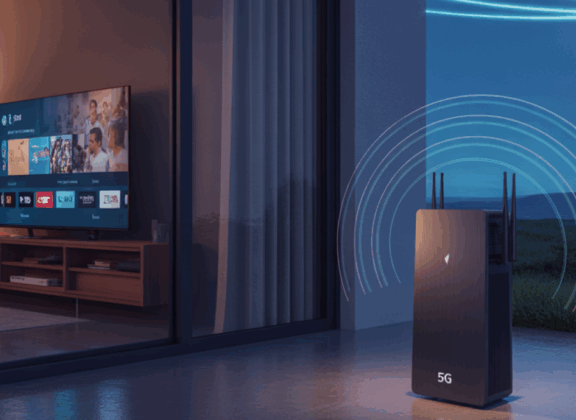As 5G Fixed Wireless Access (FWA) becomes increasingly mainstream, it is reshaping the way households access high-speed internet and stream high-resolution IPTV. For customers who lack fiber-optic options or prefer wireless convenience, 5G FWA offers a robust pathway to enjoy ultra-HD content. Yet achieving uninterrupted 4K playback requires more than simply installing a 5G modem. The choice of router, the quality of external antennas, and the precision of your network configuration all combine to determine whether your IPTV experience will be seamless or compromised.
Choosing the Right Router for 5G FWA IPTV
The router is the command center of your 5G FWA setup, translating cellular signals into data streams for your IPTV devices. To sustain the bandwidth and stability necessary for 4K content, look for routers with advanced 5G NR support, carrier aggregation, and strong Quality of Service (QoS) controls. These capabilities keep video traffic prioritized over background downloads or concurrent user sessions. Integrated Wi-Fi 6 or later protocols also help maintain low latency across multiple devices.
Equally important is the firmware and manufacturer’s update cycle. Devices optimized for multimedia streaming tend to feature multicast support, VLAN handling, and fine-grained traffic management. Pay close attention to the frequency bands the router can use, ensuring it aligns with your mobile operator’s coverage on both mid-band and millimeter-wave spectrums. Incompatibility here can severely limit performance regardless of advertised speeds.
Enhancing Reception with External Antennas
Even with a high-end router, suboptimal signal quality can hinder 4K IPTV playback. External antennas are the most effective way to reinforce your connection, particularly if your home is at the edge of a 5G cell or surrounded by obstructions. Opt for antennas built for the exact 5G frequencies your provider uses and confirm that the connectors and gain specifications are compatible with your router.
Directional antennas mounted toward the nearest cell tower often outperform omni-directional models, delivering a cleaner and stronger signal. Use premium low-loss cables and minimize their length to preserve signal integrity. This attention to detail results in fewer dropped frames and less buffering during peak hours, which is crucial for maintaining a premium viewing experience.
Establishing a Bridge for Uninterrupted Streams
After optimizing your hardware, configuring your network for maximum stability is the next step. Switching your 5G router to bridge mode or deploying a dedicated Ethernet bridge can eliminate unnecessary processing layers. This setup allows your IPTV device or downstream router to manage traffic directly, reducing latency and improving multicast delivery.
By bypassing double NAT and isolating IPTV from other network activities, bridge mode creates a dedicated channel for video streams. Some advanced installations also include a managed switch or a professional-grade home gateway, which can handle VLAN tagging, IGMP snooping, and other IPTV-specific protocols. Testing throughput and stability under real conditions will help you fine-tune your configuration.
Achieving Consistent Quality Beyond Speed
Streaming 4K content over 5G FWA is as much about consistency as it is about raw bandwidth. Latency, jitter, and packet loss can all disrupt playback, so every element of your setup should work to minimize these factors. Whenever possible, connect your IPTV device via wired Ethernet instead of relying on Wi-Fi, which can introduce extra noise and interference. Place your router and antennas where they receive the cleanest signal and keep your firmware up to date to leverage network improvements.
Because 5G conditions can fluctuate due to weather, congestion, or changing cell parameters, monitoring your connection periodically is vital. Tools that measure jitter and sustained throughput can alert you to problems early, while antenna realignment or band locking can restore performance. This vigilance ensures that your 4K IPTV experience remains steady and smooth.
5G FWA provides a powerful alternative to wired broadband for IPTV, but its benefits depend on the quality of your equipment and setup. Selecting a high-performance router, reinforcing your signal with external antennas, and configuring your network in bridge mode all work together to deliver uninterrupted 4K streaming. With careful planning and attention to detail, your IPTV devices will operate at their full potential, giving you the flawless, high-resolution entertainment experience you expect.
